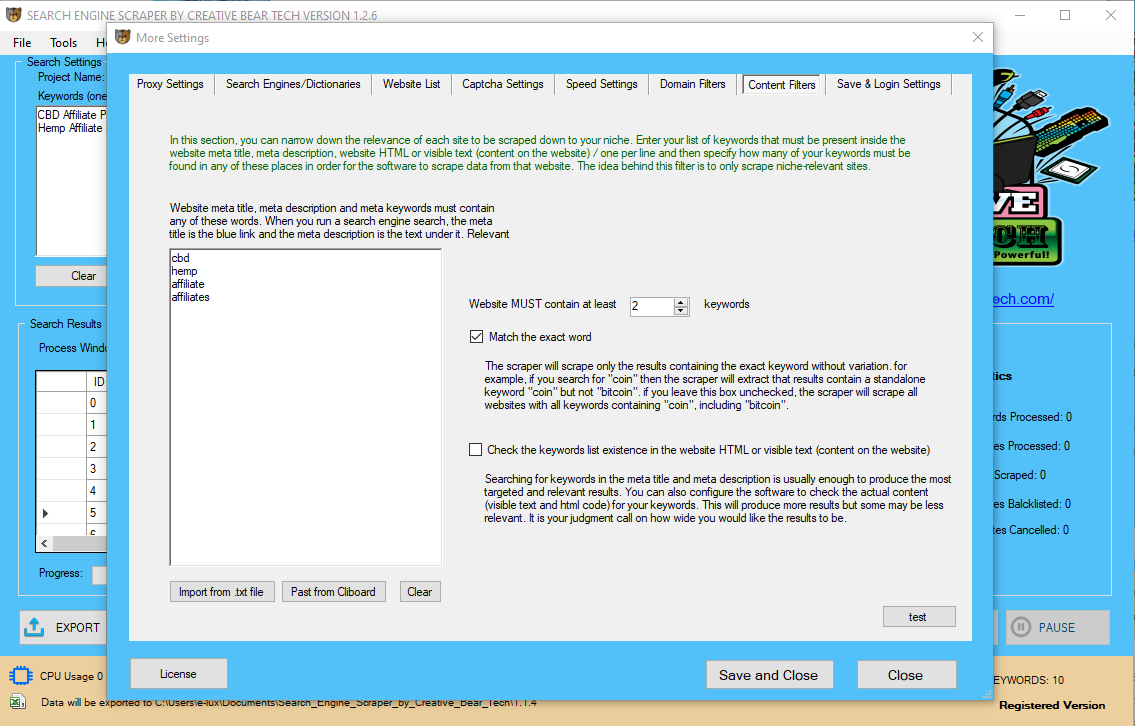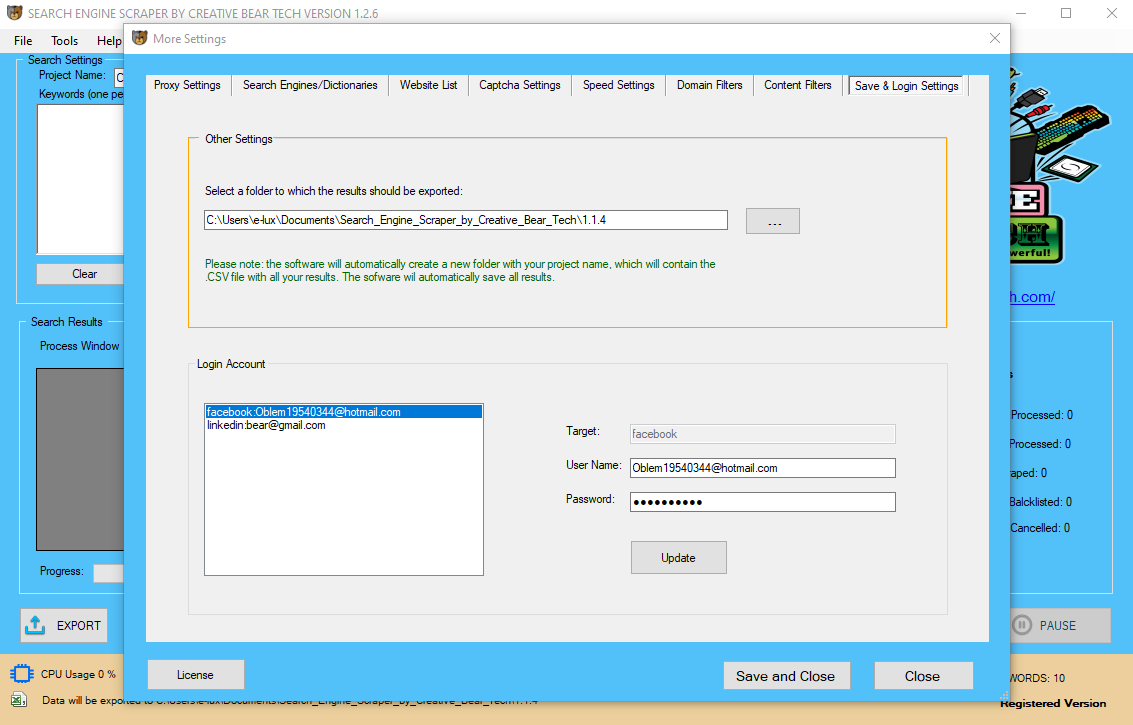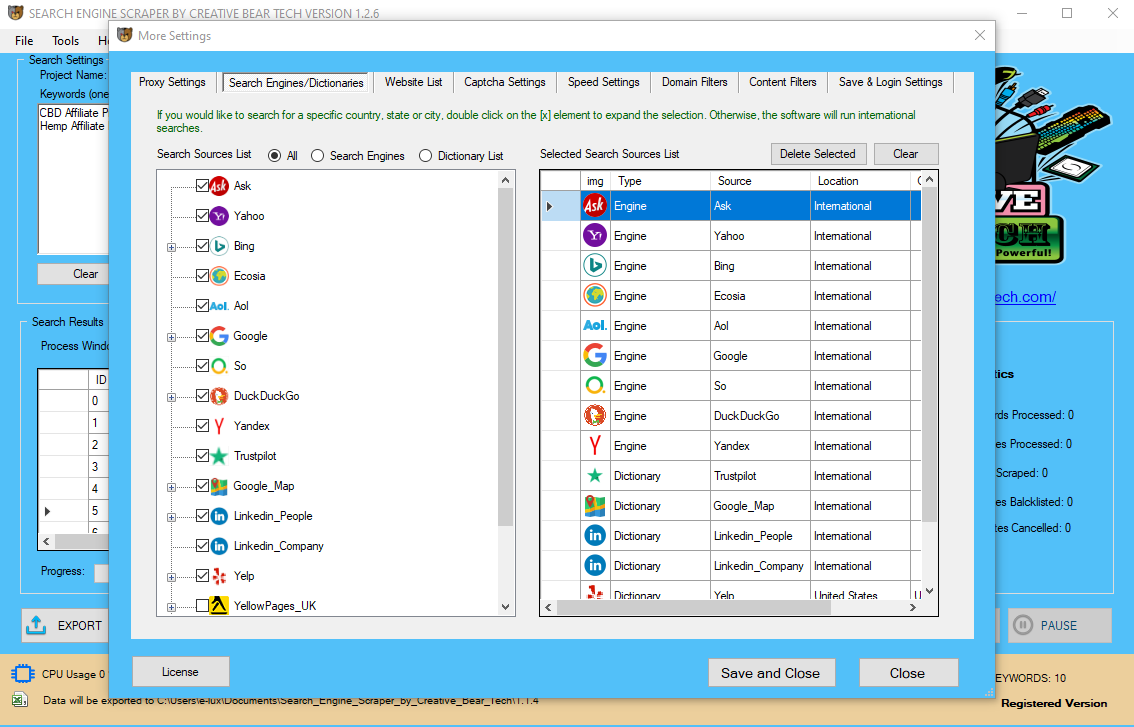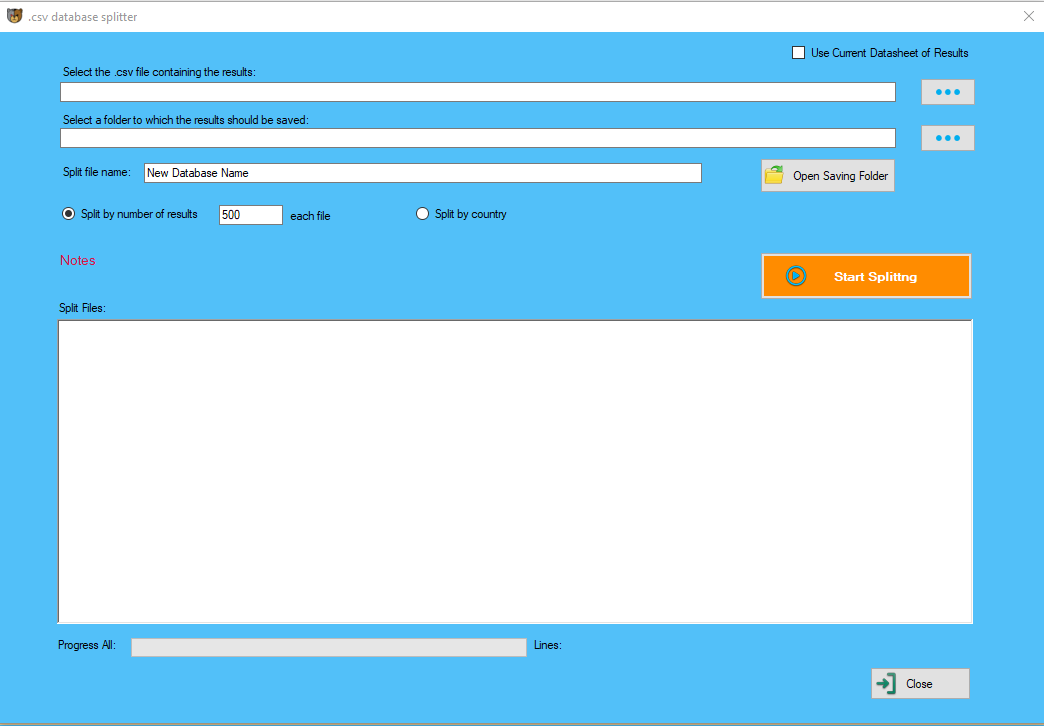The Ultimate Guide to Blockchain Marketing and Cryptocurrency

Content
ESPs adopted the IP heat-up course of to work with ISPs that rely on sender status to resolve whether to ship emails to the inbox, the spam folder or oblivion. Warming up an IP address entails sending low volumes of email on your devoted IP after which systematically increasing your e-mail quantity over a time frame. Doing so provides ISPs the chance to acknowledge, determine, and consider your sending practices before giving the green light to your complete e-mail record. Warming an IP handle is the name given to the method that's used to build a great popularity in your IP address. The process includes sending regular but small e-mail campaigns over a period of time and steadily increasing the volume of emails as ISPs start to type a constructive popularity for your IP address. However, because it stands at present, the only most important part of your sender popularity is your IP address. To a big extent, your e-mail visitors is “remembered” by inbox providers by which IP addresses the visitors came from. Email advertising platforms cover the IP warming process as a result of they've a lot of shared IPs for their clients and care for all of them. If our clients comply with the most effective practices and start sending e mail campaigns by warming up their senders’ reputation, they'll get deliverability near perfection. It’s necessary to warm up your IPs so you possibly can construct a good sending reputation and improve your possibilities of getting your e-mail into your subscribers’ inboxes. There’s no guarantee that you will not have some deliverability challenges at first, however using these finest practices will assist set you up for long-time period success. Spammers usually infiltrate inboxes with malicious email by regularly switching IPs to avoid ISP safety checkpoints. Mailbox providers are suspicious of email coming from an IP that has no status or that has an unfamiliar sending pattern. They have to guard their customers from spam, so they'll block or bulk giant volumes of email from new IPs, because it is most often coming from spammers. That’s why you should use greatest practices to heat up your IPs before your ship your normal volumes from your new IP, to indicate the mailbox suppliers you're serious about having a great popularity. It is important not to rush this course of as an IP address with a foul status could be very tough to enhance. Because of this, with a heat-up you should begin sending a small quantity of e-mail, set up a good popularity at that quantity, and then steadily increase the amount of email you ship. Mailbox suppliers are cautious concerning the email activity from new IP addresses. Spammers regularly set up new IPs and immediately begin sending large volumes of e-mail. This is particularly pertinent in case you are building a wholly new status or trying to improve one which isn’t performing very well.
Learn More About How You Can Get Your Own Ip Address From Pinpointe.
The objective with IP heat-up is to keep away from and/or mitigate deliverability points that include lack of status such as blocks, deferrals, or bounces. IP warming is the follow of progressively rising the amount of mail sent with a devoted IP address based on a predetermined schedule. This gradual course of helps to determine a status with ISPs (Internet Service Providers) as a respectable email sender. IP addresses that send out too many emails too quickly are prone to get their messages flagged as spam regardless of the content material, which is able to damage their status moving ahead.
# Ip Warm-up Plan
Over time, ISPs and ESPs will recognize an IP tackle’s typical sending habits and e-mail contents. However, within the interim, they don’t have much to judge your IP on but, so that they have a look at the only info they have – the quantity of emails despatched from that IP. Some messages will most likely be within the SPAM folder–and that’s anticipated. Drag the messages out of SPAM and into your contacts/safe sender lists. Replies to the emails are additionally beneficial in your IP warmup. As a general baseline, you need to ship at least 50,000 emails per thirty days no less than twice per 30 days (for one hundred,000 emails total) in order to have to heat up your IP. If you might be utilizing multiple IP addresses, only start sending sending email on three IP addresses at the beginning of the nice and cozy-up. If too many IP addresses begin sending mail at the identical time this appears very suspicious to the ISPs. This is required as a result of ISPs are very suspicious of e-mail from that IP handle. The fact is that ninety nine occasions out of 100, when a brand new IP handle begins sending e mail, it is a spammer that was blocked on one IP and is moving to another IP. Internet Service Providers (ISPs) collect data on all IP addresses and rank them depending on how trustworthy they're, consider it just like the IP handle equal of your credit rating. If an IP handle sends out a large amount of emails with out first establishing a great popularity with ISPs then it’s probably that the e-mail will be despatched to the junk folder. Mailbox providers view e mail from a new IP handle as suspicious until they set up a optimistic sending popularity. This indicators to ISPs that you just’re a respectable emailer, sending emails that folks need to learn. If you are sending transactional emails, you do not want to give attention to a strict IP warmup schedule, as you cannot management the rate at which transactional emails will be triggered through the account. If you are sending marketing emails, you'll need to follow some sort of IP warmup; this entails progressively rising your sending day-to-day on this new IP. This method, you can find and repair any anomalies and points that arise whenever you first start sending, serving to your deliverability long term. The important goal of IP warming is to improve your sender status. Most internet service suppliers won’t even notice your emails till you’re sending about 100 emails per day. So, once you’re ready to begin your IP warming course of, you can start with 100 emails in your first day, and schedule your day by day sends so that you hit your goal email quantity on day 15. It takes four-eight weeks to attain maximum deliverability (relying on targeted volume and engagement). Certain mailbox suppliers limit senders to thresholds – number of messages delivered per day – till they establish a popularity. However, when you get throttled, tap the brakes and gradual it down. Warming up your IP tackle is tips on how to prove to ISPs that you’re a respectable e mail sender, and that they should send your emails to the inbox. Also, it establishes your sending patterns, which helps shield you within the event that your inbox will get hijacked, as a result of ISPs can determine unusual e-mail conduct and block strange emails. If a new IP handle pops up and starts sending out tons of emails, that’s suspicious to ISPs. Spammers typically hop from IP tackle to IP address and ship a bunch of low quality emails till they get blocked. The strategy of IP heat-up involves sending low campaign volumes after which methodologically including more and more emails week-over-week or day-over-day. While increasing the sending volume, a sender must pay shut attention to how recipients work together with the sent emails by analyzing open and click on-by way of charges, and spam complaints. If you wish to start sending e mail from a brand new (cold) IP handle, certain, it’s a good idea to start out with as little site visitors as potential. The inbox suppliers are going to comprehend your e-mail is undesirable, and also you’ll end up in the spam folder.
How Can I Warm Up My Ip?
As we mentioned earlier, the nice and cozy up timeline is between 15 and 60 days. The size of your IP warming interval depends on your final e-mail volume. There are variables—like the typical number of emails you ship every person in your record—however it’s finest to follow a linear heat up course of for the primary 15 days.
What Is Ip Warm Up And Why Is It Important?

Sneak Peek Preview of the next update to the search engine scraper and email extractor ???? ???? ????
— Creative Bear Tech (@CreativeBearTec) October 15, 2019
Public proxy support and in-built checker
Integration of TOR browser
Ability to grab business name from Facebook
Download your copy at https://t.co/wQ3PtYVaNv pic.twitter.com/VRAQtRkTTZ
To pace things up, start your IP warming process by sending your emails to subscribers which have opted-in recently or engaged with a few of your latest messages. Let’s discover out what you must do to heat-up your IP address.  A shared IP tackle is often cheaper to use, but it may also be riskier because all the companies utilizing it are collectively answerable for its popularity. Any bad conduct or damage done can be tough to reverse. All it takes is one shady character to wreck the sender status of an IP handle for everyone else. Sendinblue totally protects our shared IP addresses, however not all email advertising providers do.
A shared IP tackle is often cheaper to use, but it may also be riskier because all the companies utilizing it are collectively answerable for its popularity. Any bad conduct or damage done can be tough to reverse. All it takes is one shady character to wreck the sender status of an IP handle for everyone else. Sendinblue totally protects our shared IP addresses, however not all email advertising providers do.
- The warm-up course of entails sending e-mail from the new IP beginning with small volumes, and gradually rising the volume of e mail every day or week in accordance with a set schedule.
- IP warming, or IP warm-up, is the best way you identify a popularity for a brand new IP, or an IP that has not been used for a while.
- The aim is to develop your identification and gain the mailbox providers’ trust, and improve your chances of getting your e-mail delivered to your subscribers’ inboxes.
For a spammer, having no status at all is healthier than their usual popularity. For a great sender like yourself, for this reason e-mail service providers do not advocate having more IP tackle than you need. On a shared IP tackle, you possibly can solely be as good because Yellow Pages Business Directory Scraper the least trusted sender. Fortunately, when you’re with a great e mail service supplier, even the least trusted sender is going to be fairly darn good. Their built-in controls have a look at a wide range of factors when deciding whether to let an e mail through to the inbox or filter it to a spam/junk box instead. You’ve obtained a wonderful opportunity to refresh your sender popularity with the ISPs (Internet Service Providers) and other mailbox suppliers. With your new IP address, you’ve obtained a clear slate to work with. ISPs get suspicious when emails flood in on unknown IP addresses. ESPs must see a record of your IP constantly sending high quality emails. ESPs analyze your habits as a sender and your subscribers’ engagement. Before your IP meets their standards, they are going to be suspicious of emails from a new IP handle. IP warming is a course of when a sender progressively will increase the amount of messages despatched with one IP handle. It’s needed for establishing a popularity with web service suppliers. To manually warmup your IP, you need to progressively ship more and more e-mail over your IP address at the price in our advised IP Warmup Schedule. It's necessary to build this reputation over time, which is why we advocate the throttling through IP warm-up as quickly as you obtain your new dedicated IP. This is a manual course of for users with 1 IP and would involve that you just section your sending by breaking apart contacts into smaller lists and scheduling your campaigns, as a suggestion. If you had been to add an additional IP, you'd be capable of place that into "automated IP warm-up" and we would throttle the mail for you.  IP/area warming is the process of methodically adding campaign volume week-over-week to a brand new IP Address to establish a optimistic sending popularity with Internet Services Providers(ISPs). The ISPs even have throttles that may restrict the quantity of email accepted from an IP address. The aim is to develop your identity and acquire the mailbox suppliers’ belief, and enhance your probabilities of getting your e-mail delivered to your subscribers’ inboxes. IP warming is a method to set up a new IP tackle’s reputation by steadily scaling up its e-mail sending quantity.
IP/area warming is the process of methodically adding campaign volume week-over-week to a brand new IP Address to establish a optimistic sending popularity with Internet Services Providers(ISPs). The ISPs even have throttles that may restrict the quantity of email accepted from an IP address. The aim is to develop your identity and acquire the mailbox suppliers’ belief, and enhance your probabilities of getting your e-mail delivered to your subscribers’ inboxes. IP warming is a method to set up a new IP tackle’s reputation by steadily scaling up its e-mail sending quantity.
So, ESPs find they will deliver higher when they throttle again on e-mail volume till senders can build up good reputations. Be conscious that results can differ between ISPs during the IP warming course of. If you discover outcomes from one ISP are significantly poor, create a section for e-mail addresses from this ISP. It is a good idea to ramp up send volumes more slowly for this segment to protect your popularity. Switching to a brand new ESP means you’ll be sending emails from a brand new IP that ISPs don't have any report of. Shared IP addresses are normally the proper selection for corporations that don’t plan on sending a excessive volume of emails or that want to reduce marketing costs. Warming a brand new IP tackle instead of beginning out sending at full quantity allows you to construct up an excellent sender reputation with the ISPs. At first you’ll send only a comparative trickle of emails, but you possibly can enhance volume steadily if you detect no deliverability or engagement issues. Have you ever puzzled why sure emails find yourself in your junk/spam folder while others make it into your inbox? A lot of this is dependent upon the reputation of the IP handle that was liable for sending the email within the first place. Warming up your IP lets you gradually send extra emails over your new IP to determine an excellent sender popularity. IP warming is important for an excellent delivery of email campaigns sent from a brand new IP address. Without warming up your IP, your emails usually tend to bounce or land in the spam folder. With a bad reputation, your emails could land in the spam folder or, even worse, your IP might get blacklisted. With an excellent reputation, your messages have more chances to be delivered to recipients’ inboxes. If a lure receives emails, this tells inbox suppliers that the sender isn’t following email advertising greatest practices. If your sender’s reputation relies upon only on you, IP warming usually is dependent upon your e mail service provider.
Kick Start your B2B sales with the World's most comprehensive and accurate Sports Nutrition Industry B2B Marketing List.https://t.co/NqCAPQqF2i
— Creative Bear Tech (@CreativeBearTec) June 16, 2020
Contact all sports nutrition brands, wholesalers and manufacturers from all over the world in a click of a button. pic.twitter.com/sAKK9UmvPc
At the time of beginning a warm-up, your status isn't neutral however really barely negative. During the first week you will have some deliverability issues whereas the brand new IP is constructing a sending status. Slowly growing your sending volume is not going to, by itself, stop lengthy-term reputation damage. You should be an lively participant within the warm up process. Pay shut attention to how recipients are interacting together with your mail, and make modifications accordingly. In the coming years, your sender area shall be just as essential to your sender reputation as your IP address. Depending on the standard of your subscribers and your e-mail advertising practices , you may even see additional deliverability points proceed through the warmup process. Also be sure that you’re sending consistent mail volumes to each ISP. That will get your shiny new IP tackle flagged, and also you may begin seeing a lot of four hundred errors come again all of a sudden. The ISPs are particularly on the lookout for proof that you simply’re not a spammer. Unfortunately, many spammers swap IP addresses frequently to attempt to trick the ISPs. IP warming, or IP heat-up, is the way in which you identify a status for a brand new IP, or an IP that has not been used for some time. The heat-up process entails sending e mail from the brand new IP starting with small volumes, and gradually growing the amount of e mail every day or week based on a set schedule. This broken status can be very tough to beat as soon as it’s established. You don’t need to set your email efforts up for deliverability failure by making a critical mistake proper firstly. This is why it’s so important to follow deliverability best practices and take the time to warm up your dedicated IP handle properly. For that reason, new IP addresses that begin sending emails en masse undergo careful moderation. IP warming is just needed if you are using your personal dedicated IP handle to send out e-mail campaigns. Email marketing companies such as Campaign Monitor or Mailchimp usually ship your emails together with many other service customers emails from their own IP addresses. If you are utilizing a service like this then you will not have to heat the IP tackle. Once a stable status has been gained, you will be able to send out much larger and more regular email campaigns out of your IP without ISPs getting in the way in which. IP warming is the method of methodically adding email volume to a new IP handle steadily over a number of days and weeks so as to establish a optimistic sending popularity with mailbox providers. While that is actually preferable to sending a blast of tens of millions emails out of the blue on a few chilly IP addresses, it completely misses the actual point of warming up IP addresses. When you add a new dedicated IP handle to your account, you have to warm it up. You additionally must warmup your IP if you have not despatched on it in additional than 30 days. 
Blockchain and Cryptocurrency Email List for B2B Marketinghttps://t.co/FcfdYmSDWG
— Creative Bear Tech (@CreativeBearTec) June 16, 2020
Our Database of All Cryptocurrency Sites contains the websites, emails, addresses, phone numbers and social media links of practically all cryptocurrency sites including ICO, news sites. pic.twitter.com/WeHHpGCpcF
When an ISP spots a big volume of emails coming from an unfamiliar IP, they might see this as suspicious. This causes mail to be rejected and damages your popularity as a sender. When you ship emails, Internet Service Providers (ISPs) assess the status of the IP address you send them from. The main objective of an IP warmup is to ramp up your sending volume to your anticipated “regular” ranges. You want the ISPs to learn your usual sending volumes to allow them to establish any suspicious conduct. 2) Once you’ve selected a phase, decide the quantity of email you need to ship. Once you identify your quantity, send that same variety of emails for several days in a row after which gradually increase your quantity. However, the majority What should you know before scraping? of SendGrid clients heat up their IPs within 30 days with some finishing the method in as little as 1-2 weeks. If you're attaining good e mail deliverability with excessive engagement charges, then you possibly can attempt to pace up the process.
Reasons To Warm Up – Warming Up Before Exercise Is Key
But, there are some nuances and finest practices for warming up new IP addresses that you have to know earlier than you start sending emails out of your shiny new IP tackle. Warming up a brand new IP address gradually increases the ship quantity out of your IP address, and organically builds an excellent status with ISPs. 